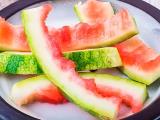Too much salt causes damage to muscle development and regeneration. Too much salt harms the nerves, makes you nervous, emphasizes stress, tiredness... Too much salt greatly affects the functioning of internal organs. Salt is necessary, but also a destructive spice.
Do you know where the most salt is?
- Frozen foods contain a huge amount of salt to preserve a fraction of the original taste. Refrigerators and freezers greatly reduce taste. Did you know that 100 grams of microwave pizza contains almost 800 mg of salt?
- Grains have many nutrients but also 250 mg of salt. At first glance, it doesn’t seem like much, but when you think about where grains appear (even in chewing gums), the total for the day can be very burdensome.
- Vegetable juices are healthy but also full of salt. When it comes to purchased vegetable juices (like tomato juice), the amount of salt in 1 dl can exceed 500 mg.
- Sausages are known for large amounts of salt. While the situation has been improving lately, meat products are real chemical bombs because, in addition to annoying salt, they contain a lot of emulsifiers, accelerators, enhancers, and preservatives. Otherwise, meat products would hardly remain edible for a long time. Remember that just one slice of dry sausage can contain up to 180 mg of salt. When it comes to sausages, read the label and ingredient declaration very carefully.
- Packet soups have as much salt as a small mine. In 1 dl of such soup, there is an average of 744 mg of salt. Too much, far too much!
- Fish stays fresh longer if salted. Fishermen salt them, transporters salt them, and retailers salt them, and finally, you add a pinch of salt yourself. 100 grams of fish can contain more than 1024 mg of salt by the time it reaches your table.
- Purchased sauces and ketchup are considered saltier foods in our everyday lives (values are almost all between 1000 and 1500 mg). The only luck here is that we don’t eat ketchup in large quantities. At least most of us don’t.
- Salty snacks already give away what to expect with their name. In 100 grams of cheap chips, there can be up to 2300 mg of salt. Even if you eat peanuts, pistachios, hazelnuts, or other healthy fruits, the amount of salt can rise to 3300 mg. Salty snacks are never healthy. And they also make you gain weight!
- Cheese. Did you know that 30 grams of the most famous English cheddar cheese contains more salt than a 100-gram bag of chips? Large amounts of salt are also found in parmesan and a variety of other cheeses. There is even more salt in cheeses than in seawater.









 Would you like to be informed about news on the website?
Would you like to be informed about news on the website?

